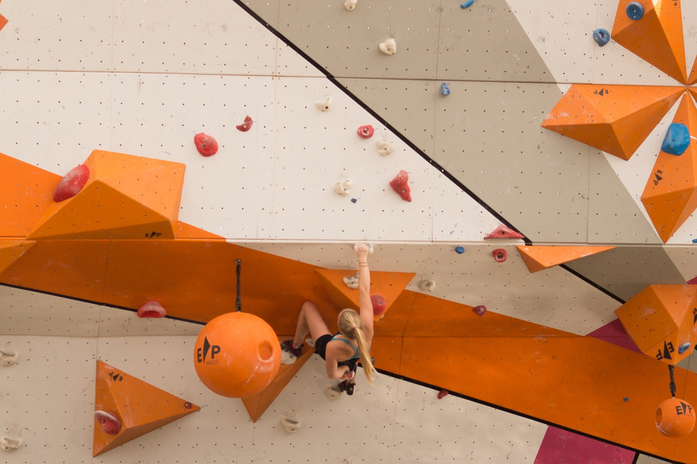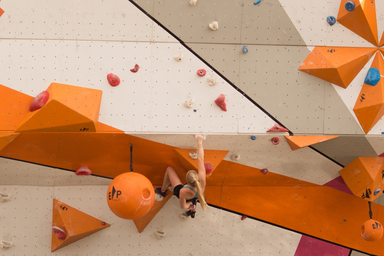When my friend invited me to a ladies’ night at London’s Junction Climbing gym, I didn’t think of it as much more than spending an evening trying something new. After all, isn’t that what university is about ‒ being adventurous? The elements of the night certainly didn’t indicate a recipe for success. I had never been much of a gym rat, managing only one or two days a week giving a halfhearted attempt at the elliptical. Even worse, I had always nursed a healthy fear of heights. Yet two hours later, fingers and legs shaking from adrenaline and utter exhaustion, I was enchanted. I had, as the Western climbing club promises, been bit by the climbing bug.
It wasn’t until my next trip to Junction that I visited the upper floor of the gym where I found my true love: bouldering. Bouldering is rock climbing without a harness, leaving you on the wall with only your climbing shoes (with tough rubber on the sole so you can stand on your toes) and hand chalk (for grip!). Bouldering routes are shorter than regular climbing, but they are designed to be trickier. Each “problem” has multiple solutions depending on the climber (for example, someone with long arms may solve it differently than someone with long legs) and the options range widely in difficulty. Some problems work on a specific skill, such as crimps (small edges, relying on finger strength), or dynos (dynamic movements, where the holds are too far apart to reach so the climber must jump) while some simply require different kinds of strength. The puzzle-like nature of bouldering means that solving a problem is immensely satisfying. It also means that it’s easy to track your progress and see how you improve each session.

You can’t identify the best climbers by sight alone, they’re not always the tallest or the buffest on the wall. The variety of routes means that anyone can boulder if they’re willing to try (and fail!). The only quality that I’ve found most climbers share, other than their love for the sport, is a positive attitude. Even before social distancing, climbers need to stay fairly far apart for safety reasons, so a large chunk of bouldering is time spent watching others climb before you. Instead of cultivating an intimidating or judgemental atmosphere, climbing gyms have become a supportive space where a more experienced climber is almost always willing to approach you with some quick beta (a climbing tip, like so: keep your hips close to the wall!) or, at the very least, share a good-natured gripe over the trickiness of a problem. Bouldering may be a solitary sport, but it’s far from lonely!
Another odd draw to the sport is its lingo, because, let’s be honest, who doesn’t feel at least kind of cool confidently rattling off sports jargon? Did you send a route (finish it) or flash it (finish it first try)? Are you sharing beta (a helpful tip) or are you beta-spraying (oversharing information so the route has no mystery left)? Is your hand on a jug? A pinch? Or perhaps a sloper? The lingo is fun to learn, and makes it easier to chat with other climbers to a more specific degree, but there’s no pressure to memorize all the different names and actions. Sure, the box that sticks out of the wall may technically be called a “volume,” but calling it “the sticky-outy bit” gets the point across just as well.
Overall, just under a year since that first ladies’ night, I am a bouldering fan to the core. The exercise is great and significantly less tortuous than anything I used to do at the gym, and the community is constantly warm and welcoming. Climbing gyms are quite possibly the thing I miss most during quarantine. Give it a try someday, who knows, I might see you on the walls!
Related Articles
- Feeling Fulfilled While Being a Student
- Types of Imposter Syndrome and How To Deal With Them
- 9 Helpful Apps for University Students
Want more HCW? Check us out on social media!


